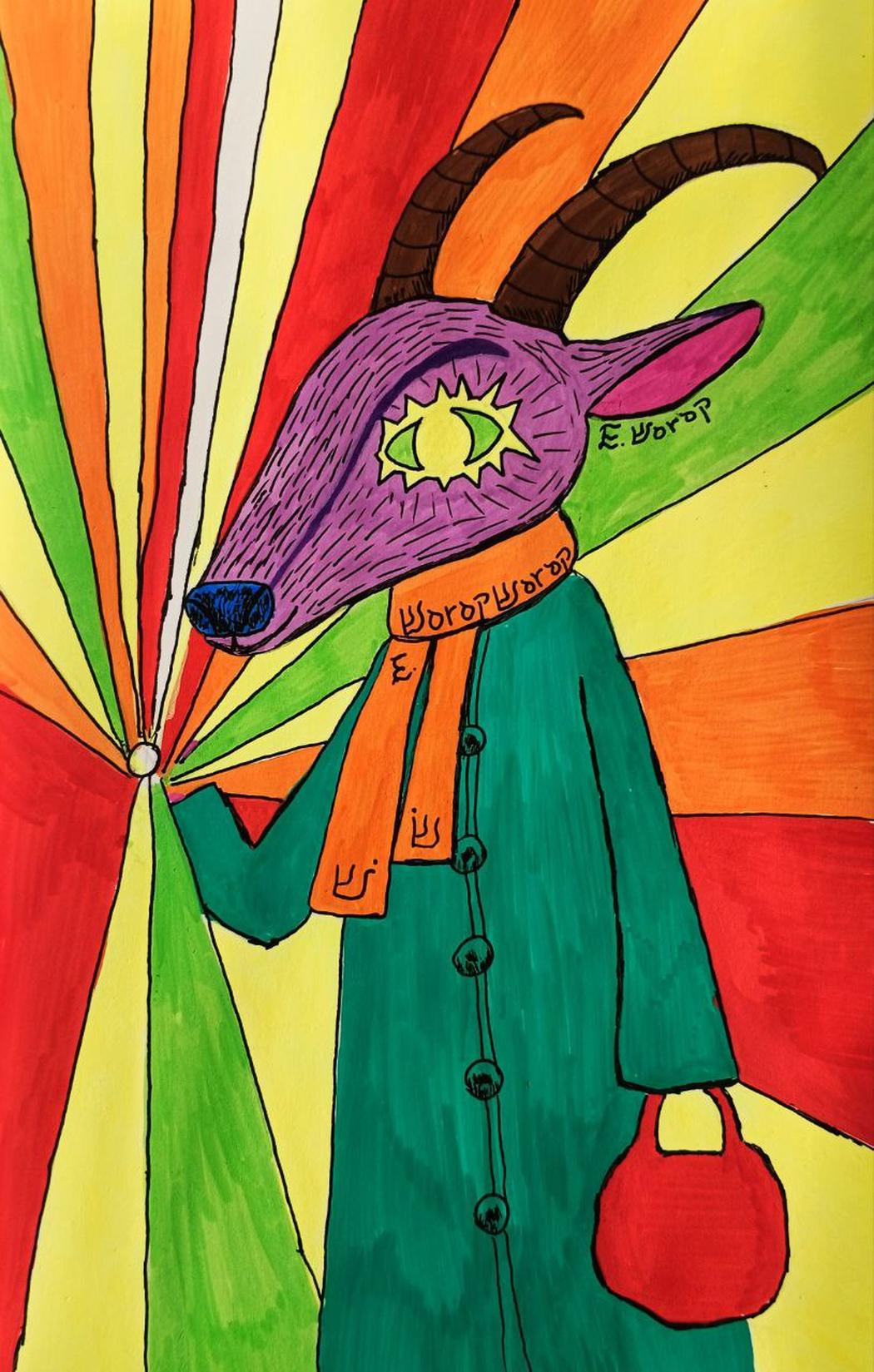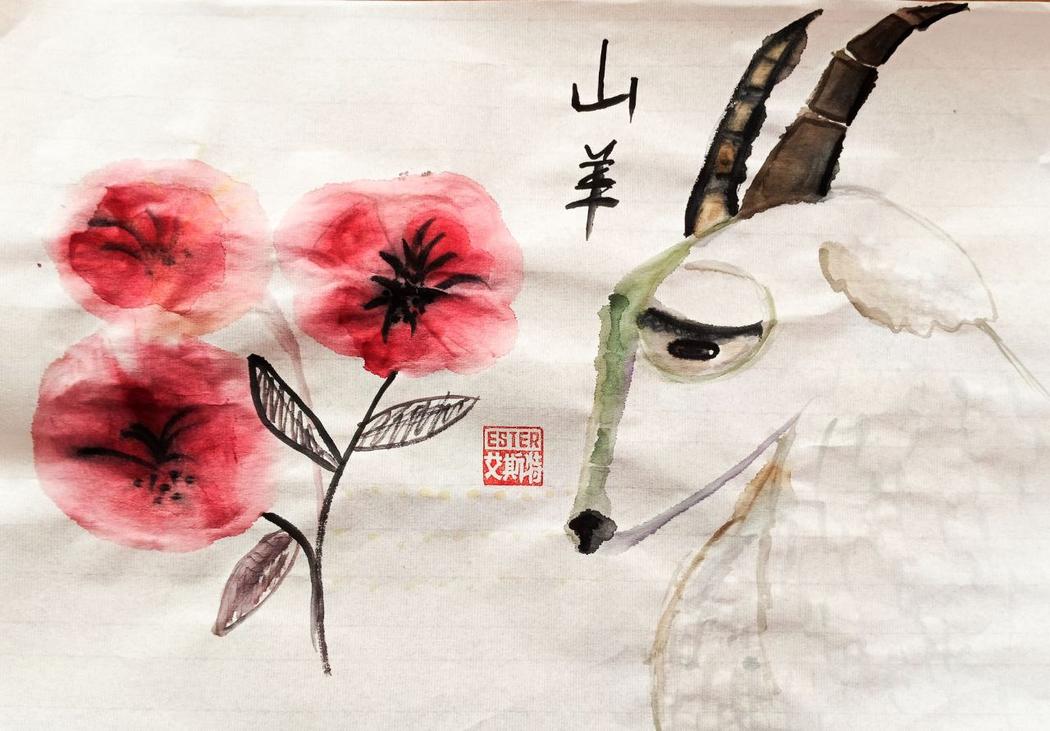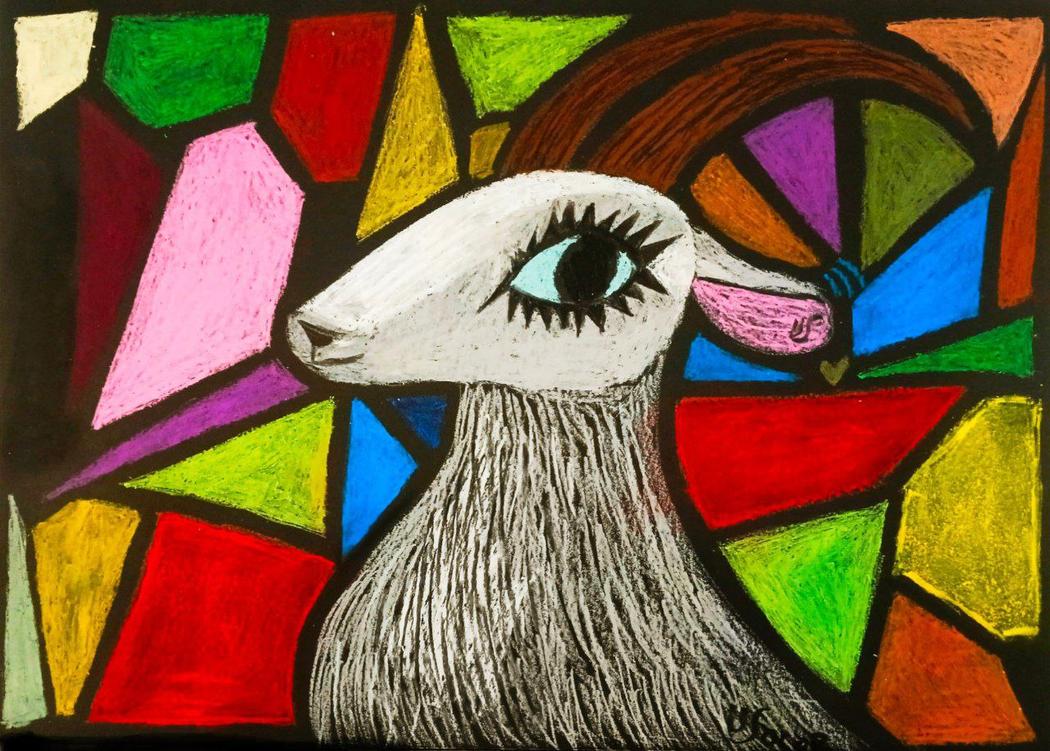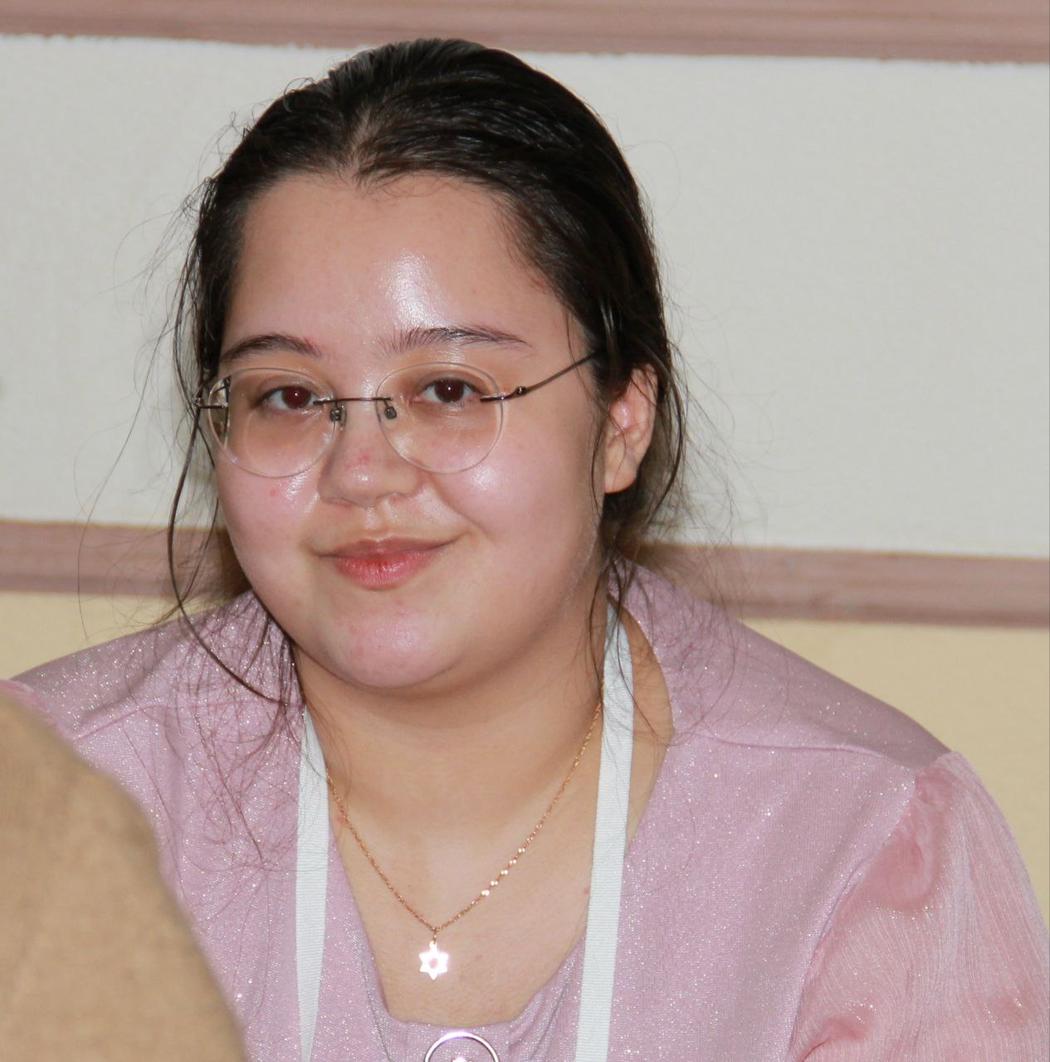Ester Voropaeva
Where do you live: Moscow/Quanzhou
Your education: Ilya Repin Children’s Art School (Russia, Moscow), the Institute of Fine Arts of Huaqiao University (China, Quanzhou).
Describe your art in three words: Bright, Provocative, Abstract
Your discipline: Graphics, illustrations, pastels, watercolors, oil painting.
Website
Your series “Goats of Ester Voropaeva” has a strong symbolic and emotional charge. How did the idea for this series originate?
There’s an old lullaby in Yiddish called “Raisins and almonds”, where a white goat returns from market and gives the sweets to the child. So, in Jewish culture, a goat doesn’t represent something bad, and the goat was especially important in rural Jewish areas in Eastern Europe called “shtetles” as the source of food (the famous twentieth-century Russian-Jewish artist Marc Chagall often depicted shtetl life and various domestic animals, including goats).
In European culture, the goat has become one of the symbols of infernality, impurity and sin, and in the nineteenth century it was reinforced by the artist Éliphas Lévi, who depicted Satan as a goat. And it turns out that in one culture the goat is important and good, but in another it represents something else. So here it is, the quiet, two-sided semiotics of the goat.
In your artist statement, you speak about the problem of labeling people. Have you personally experienced being misunderstood or misjudged?
Labeling happens to many people, and I am no exception. For me, it concerns my background from all sides. When my parents were choosing my name, it was important that the name sounded harmonious both in my father’s language (Russian) and in my mother’s language (Chinese). It is known that some words and names from one language can sound not just unpleasant in another language, but even like the dirtiest curse. One day, when my mother was cooking in the kitchen while she was pregnant with me, she was listening to an American radio play, and the name Esther was repeated frequently. In Chinese, this name sounds perfect. She suggested this name to my father, and he supported her, because he didn’t want me to have the most typical Russian name, because his life experience showed that unusual names attract people and are better remembered.
My parents were not so deeply immersed in world and, especially, Jewish ancient culture and history, and didn’t even imagine that they gave their daughter the name of one of the most important women in Jewish history, Queen Esther. Thus, from childhood, automatically, without having any Jewish blood, I already acquired the label of Jewish nationality.
At the age of eleven, I liked the comedies with Adam Sandler and I began to realize that my name was unusual and related to Jewish culture (although some traditional Russian names also come from Jewish culture, but they have become so common that they have lost their unusualness). My name is not so widespread in Russia yet, and, of course, attracts attention. And my unusual name led me to be interested in Jewish culture and the history of the Jewish people in my teens, and recently I even took a now fashionable DNA test, which showed that nine percent of the blood of Bukharan Jews flows in me.
My mixed background and unusual name lead to misperceptions from other people sometimes. There are many people with mixed background in the modern world, and I hope that my works will help them cope with the ambiguous attitude towards them.
Therefore, my goats, my goat zoo, as I jokingly call my series of works, are a silent protest and even a provocation. They say with their whole appearance: think what you want about me, be afraid of me if you want, I am not going to change anything in myself, I am what I am.
 Ester Voropaeva | Flickering Goat Acryl | 2025
Ester Voropaeva | Flickering Goat Acryl | 2025
Your works blend bright colors with unsettling expressions. How do you balance beauty and discomfort in your compositions?
You have to be a perfectionist in the percentage of beautiful and terrifying, otherwise you risk losing the viewer’s attention to your art. You can see that the most mystical part of the goat is its eye, which is not depicted realistically, but in my own style. It is mainly located closer to the center of the composition. Usually, people look first at the center of the work, and then around the center. The goat’s eye looks scary and catchy, but further on the picture is more pleasing to the eye in terms of color and composition.
You work in multiple media, from pastels to watercolors to acrylic. How do you choose the technique for a particular piece?
Usually, I first imagine the plot of the work, make drafts with the composition, imagine how the work will look as a result on different canvas formats. And then the understanding of what technique I will use to create the work comes by itself.
 Ester Voropaeva | Goat And Flowers
Ester Voropaeva | Goat And Flowers
What influence has your Russian-Chinese background had on your artistic approach and themes?
My Russian-Chinese cultural background gives me many ideas on how to combine elements of these two cultures on canvas. Here I would like to point out that this background influences any creative beginning in me in general. In addition to visual artistic creativity, I am interested in musical creativity. Chinese songs and lullabies that my mother sang to me as a child led me to a TV Chinese song contest called Cultures of China Water Cube Cup Chinese Songs Contest. I participated in it for three years in a row and eventually won the bronze award in the final of the contest in 2022. Also, the books I have illustrated are all related to the study of the Chinese language and culture. And, having become a member of the Russian-Chinese Association of Calligraphers and Artists this winter, I have rethought my approach to my work and am also creating experimental works in a style close to Chinese folk and create many works on the theme of mixed Russian-Chinese origin.
You already illustrated five books by the age of 20. How different is your process when working on book illustrations versus independent artworks?
The process of creating works under a contract with a publishing house differs significantly from the process of what I call free art. In the work of an illustrator, firstly, there is a certain plot of the book that must be adhered to. Secondly, the color combination, technique (all my illustrations are black and white, in graphics) and the format. And most importantly, there is a time frame, you must manage to make the number of works specified by the publishing house (one of the books contains exactly one hundred of my illustrations) before the deadline. You can see my works and listen to Chinese songs performed by me with a guitar on my personal website youhua.ru.
 Ester Voropaeva | Mosaic Goat | 2025
Ester Voropaeva | Mosaic Goat | 2025
How does your education in China at Huaqiao University influence your current work?
I spent most of my life in Russia, and I didn’t visit China very often or for long. When I found myself in China for a longer period of time, I discovered this country in a new way. Just being in this new environment stimulates me to new ideas in my work. Everything is different here: the climate, the food, the mentality. I really like it here. Education at the Institute of Fine Arts of Huaqiao University has improved my skills and techniques and gave me some new art ideas, and I’ll definitely bring them to life in the future.


Leave a Reply
You must be logged in to post a comment.